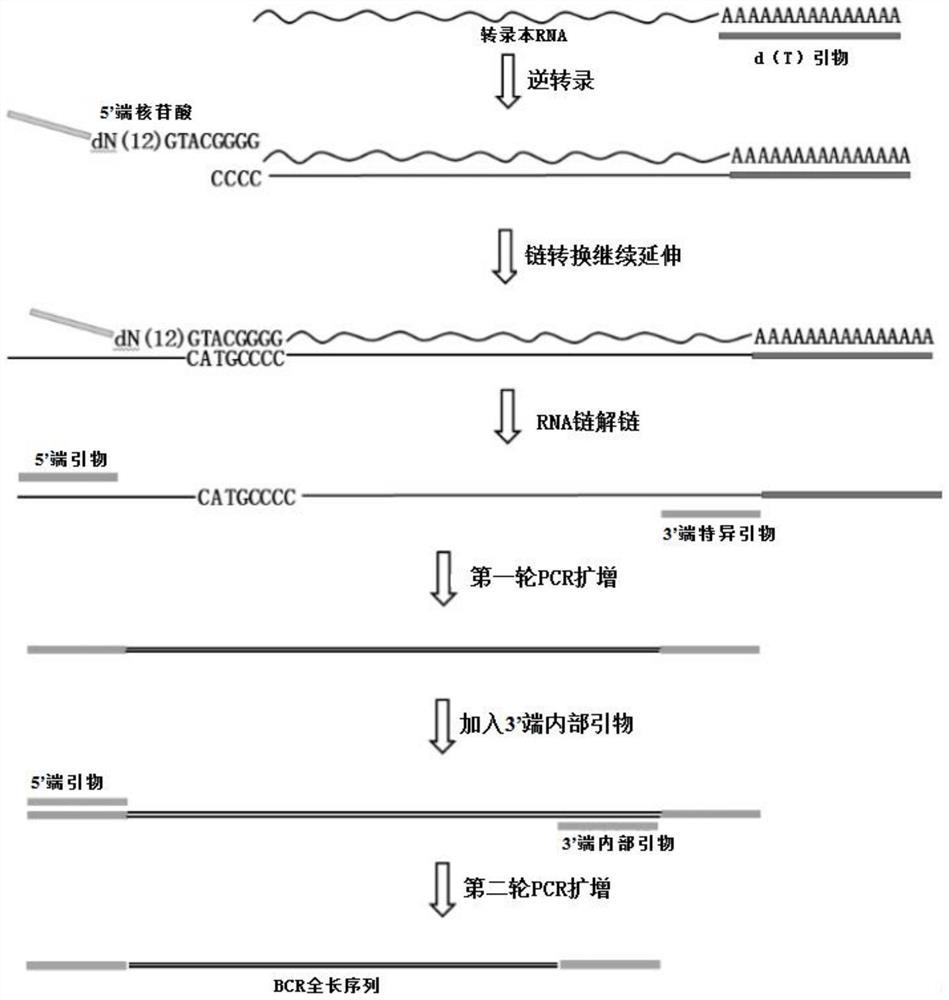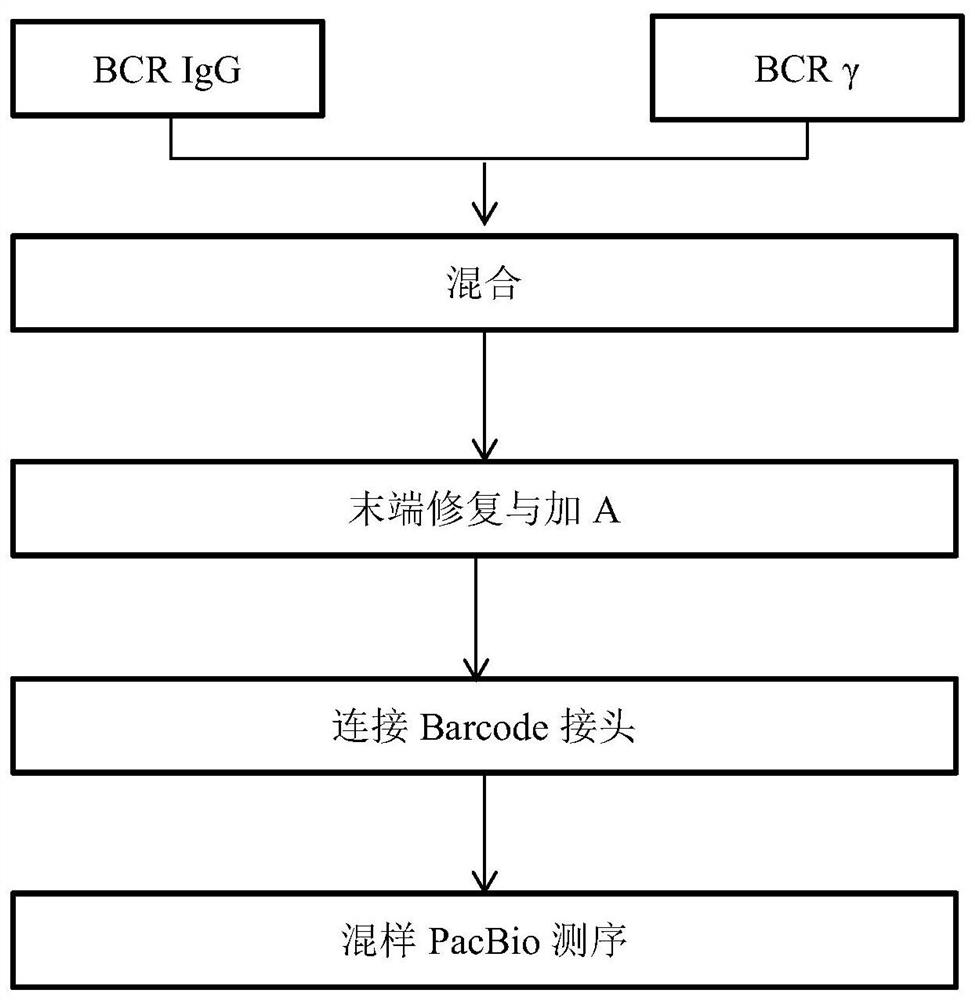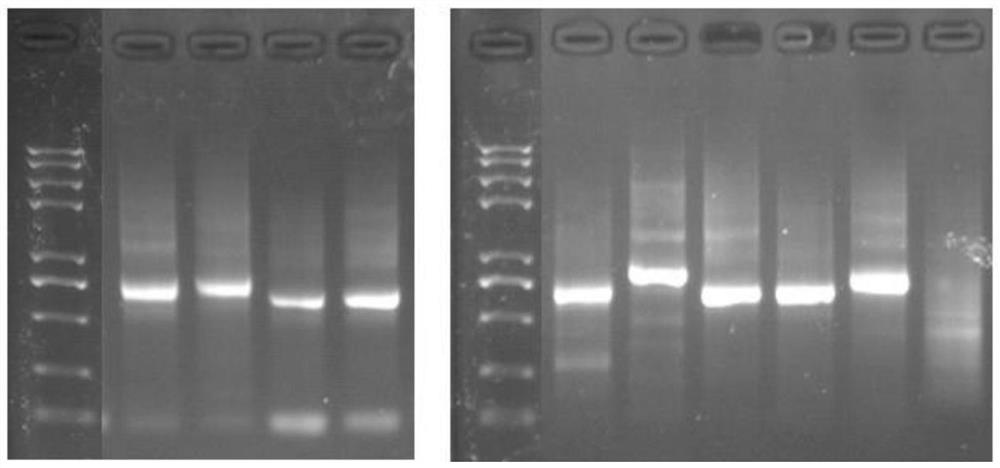Three-generation library constructing and sequencing method for overall length amplification of BCR immunity group library
An immune library and full-length technology, applied in the field of gene sequencing, can solve problems such as the lack of key variable region sequences, achieve excellent amplification and enrichment effects, simplify experimental operations, and simplify experimental procedures
- Summary
- Abstract
- Description
- Claims
- Application Information
AI Technical Summary
Benefits of technology
Problems solved by technology
Method used
Image
Examples
Embodiment 1
[0048] Embodiment 1: the synthesis of primer
[0049] The primer sequences designed in the present invention can be synthesized in various primer synthesis companies, such as Shanghai Sangong, and the primer sequences provided are shown in Table 1.
[0050] Table 1: Sequences of designed primers
[0051]
[0052]
[0053]
[0054] Among them, BCR Template Switching Oligo primers and 5'-end universal primers are designed based on the consistent sequence of the constant regions of different types of BCR immune repertoires; 3'-end specific primers are designed based on conserved regions, covering the entire BCR immune repertoire The full-length sequence of the library.
[0055] In addition, V in the Oligo dT primer is a degenerate base, representing one of G, A, and C; in the BCR TemplateSwitching Oligo primer, [dN(12)] is represented as a 12-base UMI tag sequence, composed of 12 random bases The base composition is used to correct the bias of the amplification, that i...
Embodiment 2
[0059] Example 2: Synthesis of cDNA first strand in total RNA
[0060] The primers used in the experimental steps were synthesized in Shanghai Sangong, and the primers were uniformly diluted to 10uM. The first step of the project embodiment of cDNA first-strand synthesis is as follows:
[0061] 1) Oligo dT reverse transcription primer combined with poly(A)
[0062] Table 2:
[0063]
[0064] Gently flick to mix, centrifuge briefly, incubate at 70°C for 5 minutes and place on ice immediately.
[0065] 2) Reverse transcription to synthesize the first strand of cDNA
[0066] Prepare the following reaction:
[0067] table 3:
[0068]
[0069] Gently flick to mix, centrifuge briefly, and incubate at 42°C for 75min. Immediately after the completion of the reaction, place it on ice, add 1uL of BCRTemplate Switching Oligo, flick to mix well, centrifuge briefly, and incubate at 42°C for 15min.
Embodiment 3
[0070] Example 3: Full-length amplification of BCR cDNA
[0071] The full-length amplification of BCR cDNA includes two rounds of semi-nested amplification reactions. The first round of amplification carries out the preliminary enrichment of BCR sequences, and the band uniformity of the amplified sequences is poor. The second round of amplification uses internal Nested primers further improve the specificity of amplification and make the amplified band single.
[0072] 1) The first round of PCR amplification of the full length of BCR cDNA
[0073] Take a new 0.2mL PCR tube and add the following reagents:
[0074] Table 4:
[0075]
[0076]
[0077] Mix well, centrifuge briefly, and place on a PCR instrument for PCR reaction: incubate at 98°C for 2 minutes; incubate at 98°C for 20 s, at 65°C for 15 s, and at 72°C for 45 s, a total of 18 cycles; then incubate at 72°C for 5 min.
[0078] After the reaction, it can be stored in a -20°C refrigerator for a long time.
[00...
PUM
 Login to View More
Login to View More Abstract
Description
Claims
Application Information
 Login to View More
Login to View More - R&D
- Intellectual Property
- Life Sciences
- Materials
- Tech Scout
- Unparalleled Data Quality
- Higher Quality Content
- 60% Fewer Hallucinations
Browse by: Latest US Patents, China's latest patents, Technical Efficacy Thesaurus, Application Domain, Technology Topic, Popular Technical Reports.
© 2025 PatSnap. All rights reserved.Legal|Privacy policy|Modern Slavery Act Transparency Statement|Sitemap|About US| Contact US: help@patsnap.com



